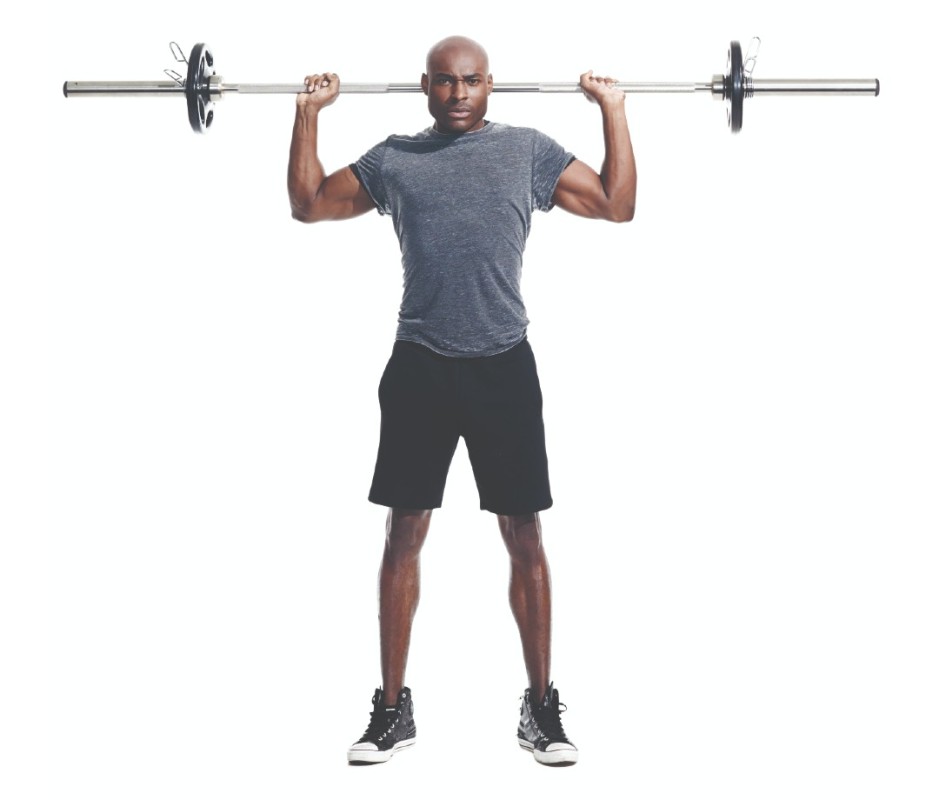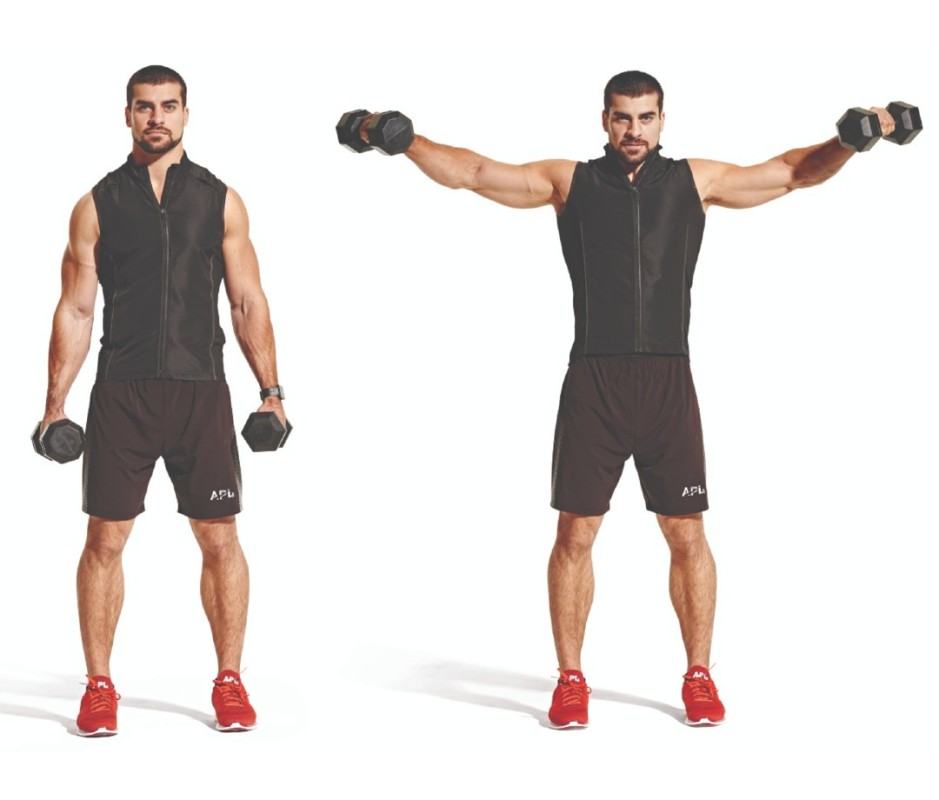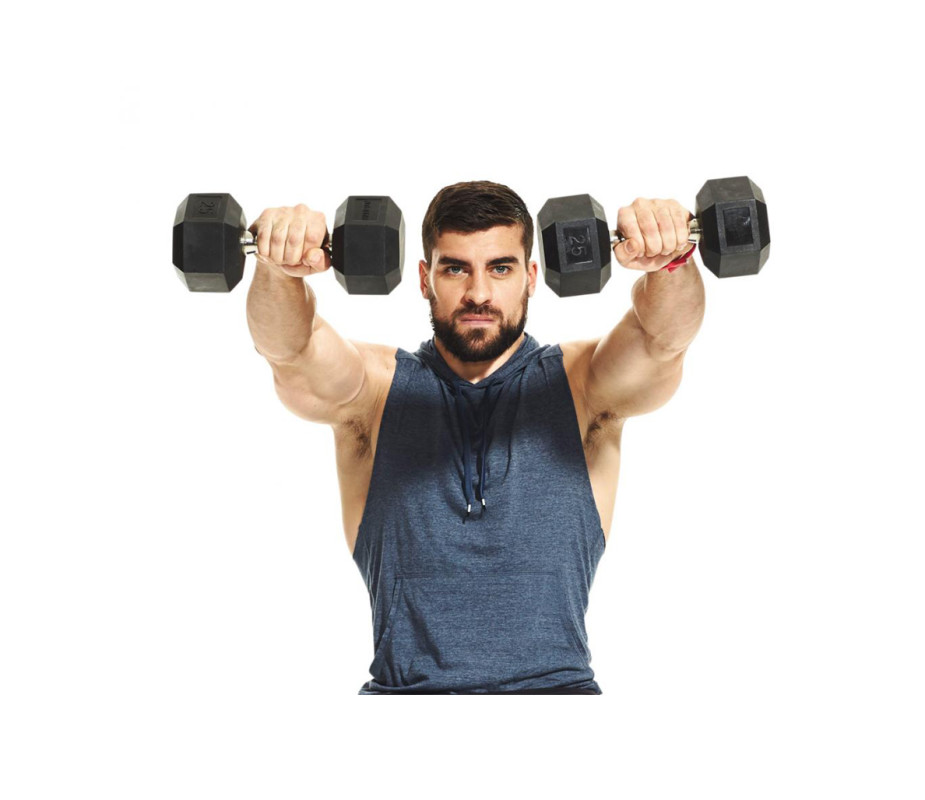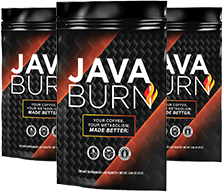If there’s one body half that provides an prompt air of dominance and masculinity to a person’s physique, it’s the shoulders. They cap off a match waist, make your body look proportional, and craft the coveted V-taper. If you’re not training your complete higher body in favor of blasting your biceps or triceps, you’re lacking out.
A powerful set of shoulders will make your life simpler. Everyday actions like taking part in sports activities and lifting suitcases can be extra of a breeze, plus you may cut back your danger for damage throughout again and chest exercises and make your workouts much less irritating—in your thoughts and muscle tissue.
We spoke with Noah Bryant, C.S.C.S., for the 10 finest exercises to thicken and widen your shoulders to create a V-taper body.
“To successfully grow a pair of behemoth shoulders, you need to be aware that the deltoid is made up of three heads, the anterior deltoid (front), the lateral deltoid (side), and the posterior deltoid (rear),” Bryant says. “For symmetrical growth, you always want to start your training with the big, compound movements, then hit all three heads with lighter isolation movements.”
Check out Bryant’s V-taper exercise picks under.
How to Build a V-Taper: Best Workout to Bulk and Broaden
Directions
Pick 2 to 3 compound actions and 3 to 4 isolation strikes on shoulder day to hone capped shoulders, bulked traps, and a broader higher body that’ll present via even your chunkiest winter sweaters.
1. Overhead Press (Compound)
Beth Bischoff
“This is one of the best overall delt-developing exercises,” Bryant says. While most guys consider the bench press as the final upper-body exercise, the overhead press actually is an incredible muscle-builder. If you’ve gotten a healthy again and shoulders, you do not make any rookie errors, and you execute it with correct kind, you are virtually assured to fill out your body. You additionally get the added advantage of working your triceps.
How to Do It
- Grasp the bar with a slim grip barely wider than shoulder-width.
- Keep your elbows vertical and your toes barely wider than shoulder-width.
- With the bar in your anterior delts, tighten your legs, glutes, again, and abs, then press upward.
- Move your head barely out of the means as the bar rises, returning it to its pure place as soon as it clears your head.
- Fully prolong your elbows above the crown of your head and shrug your shoulders to have interaction your traps. Avoid doing a push press; maintain your knees straight to focus in your delts fairly than utilizing your legs.
- Do 3-5 sets of 5-8 reps
Pro Tip
You may need to go decrease in weight than you are used to so as to get the kind proper as a result of this works smaller, lesser-used muscle tissue in your higher body.
2A. Behind-the-Neck Press (Isolation)

James Michelfelder & Therese Sommerseth
This is one other full-shoulder exercise that may trigger damage when executed improperly. But when it is finished proper, the behind-the-neck press successfully works the complete musculature of your shoulders, Bryant says.
- Grip the bar with arms a pair inches wider than shoulder-width.
- Press the bar overhead with out locking your elbows.
- Lower it behind your head, maintaining your neck barely flexed.
- Press the bar again up earlier than it touches your traps or should you really feel discomfort.
- Do 3-5 sets of 6-10 reps.
Pro Tip
You can carry out this both seated with again help, or standing.
2B. Alternating Dumbbell Press (Compound)

James Michelfelder
“Doing this exercise unilaterally (one arm at a time) maximizes time under tension and helps to identify and eliminate imbalances,” Bryant says.
How to Do It
- Start with each dumbbells in the locked-out place above your head, palms dealing with out/ahead.
- Slowly decrease one arm at a time, then press the dumbbell again up.
- Keep your non-moving hand locked out above your head (till the hand in movement returns to the prime), or maintain it stationary in your lap.
- Repeat this course of utilizing your different arm.
- Do 4 sets of 6-8 reps on every arm.
Pro Tip
You can carry out this exercise standing or seated.
3. Barbell Upright Row (Compound)

James Michelfelder & Therese Sommerseth
“Barbell upright rows will hit your front and side deltoids, and it’ll tie in the traps,” Bryant says. Again, take care to execute with correct kind.
How to Do It
- Grasp the bar simply narrower than shoulder-width aside with an overhand grip.
- Leading along with your elbows, pull the bar straight up towards your chin, maintaining your elbows high and the bar shut to your body.
- Lower the bar again down and repeat.
- Do 4 sets of 8-15 reps.
4. Barbell Front Raise (Isolation)

James Michelfelder
You’re focusing on your entrance delts, however you may really feel the fatigue setting into your aspect delts as effectively. Bryant advises: “Keep the weight light enough to perform the lift with good technique.” Note: You also can use dumbbells or exercise bands should you’re figuring out at residence.
How to Do It
- While standing, grip a barbell with arms shoulder-width aside and palms dealing with down.
- Stand up straight with the bar hanging towards your thighs. Pull your shoulder blades again and have interaction your core, positioning the bar about 5″ out of your body.
- Lift the bar in an arc movement to shoulder peak, maintaining arms straight, and keep away from swinging.
- Pause, then decrease the bar again to the beginning place.
- Do 4-5 sets of 12-20 reps.
5. Incline Lateral Raise (Isolation)

James Michelfelder
“This is a great isolation movement for your side delts,” Bryant says. “Make sure to emphasize the stretch at the bottom of the lift and keep the reps controlled.”
How to Do It
- Grab a pair of dumbbells and sit on an incline bench along with your arms straight down at your sides.
- Raise the dumbbells straight out (so your arms are parallel to the flooring) till you attain shoulder stage.
- Lower your arms, maintaining management of the dumbbells the complete time.
- Do 3-5 sets of 12-15 reps.
6. Face Pull (Compound)

Beth Bischoff
“Face pulls work the posterior deltoid and, surprisingly to most, even put extreme stress on the medial deltoid,” Bryant says. “Pulls also target your back’s weak scapular muscles, which aid in stabilization of your shoulder joints—great for shoulder health.”
How to Do It
- Use the rope attachment on the highest pulley of a cable weight machine.
- Start with the rope a pair inches above your eyes.
- Grab the rope with an overhand grip, and take a step again so there’s pressure in the rope.
- Sit your hips again, and start pulling the cable. Let your elbows flare out so that they’re parallel to the floor.
- Pull the rope towards your eyebrow, then return it—beneath management—to the beginning place.
- Do 3-5 sets of 15-20 reps.
7. Bentover Lateral Raise (Isolation)

James Michelfelder
“The bentover lateral raise directly targets your posterior delt (the back of the shoulders),” Bryant says. The key right here is to maintain the motion strict to actually get the advantage of the exercise.
- Bend over till your torso is parallel to the floor, holding dumbbells with palms dealing with one another.
- Keep your decrease again naturally arched. Squeeze your shoulder blades to raise the weights in an arc till they’re parallel to the flooring, with thumbs pointing up.
- Return to the beginning place.
- Do 3-5 sets of 8-12 reps.
8. Incline I,Y,T’s (Compound)

James Michelfelder
Unlike a few of the different strikes, which have an emphasis on bulking your higher body, this motion actually hones in on shoulder health, Bryant says. Though it will offer you the aesthetic you are on the lookout for, too.
- Lie chest-down on a forty five° incline bench, holding a dumbbell in every hand with arms hanging down (toes touching the floor).
- Squeeze shoulder blades and elevate dumbbells to your sides (making a “T”), then decrease.
- Raise them to head-level (making a “Y”), then decrease.
- Raise them straight in entrance (making an “I”). This completes 1 rep.
- Do 4 sets of 5-8 reps.
Pro Tip
Keep the weight very mild for this exercise—it will sneak up on you.
9. Standing Lateral Raise (Isolation)

James Michelfelder
Do this as a mixture of two exercises. First, you may do a set of lateral raises, then instantly go right into a set of entrance raises (following exercise) to full the superset.
- Stand along with your knees barely bent, leaning ahead with a dumbbell in both hand.
- Raise your higher arms out to your sides till your elbows (which must be barely bent) are shoulder-height.
- Return to the start place.
Pro Tip
Don’t use a weight that’s too heavy and keep away from utilizing momentum to full the movement.
10. Front Raise (Isolation)

James Michelfelder
Front elevate exercises actually work flexion by isolating your anterior (entrance) deltoid.
- While standing along with your toes hip-width aside, maintain a dumbbell in every hand, palms-down, about 5″ in front of your thighs.
- Raise your arms in front of you, keeping a slight bend in your elbows.
- Pause when the dumbbells reach shoulder height, then slowly bring them back to the starting position.
- Do 3-5 sets of 10 reps of each exercise (for a total of 20 reps per set).
Pro Tip
Don’t use momentum or lower the dumbbells too quickly. You want to keep the motion controlled to get a good contraction in your shoulder in order to improve stability through the joint.
Related: The Most Creative Dumbbell Workouts to Build Muscle and Burn Fat at Home
(*10*)


















Discussion about this post